Update from the Field: Not a Good Time to Lose One’s Head
Posted by Dave Dyson, Agronomist on June 04, 2020

The recent wet weather in certain regions has played havoc on corn and soybean seedlings, and the lingering moisture is fueling fungal spores that can cause damage to the wheat crop. As of May 18th, 2020, the wheat crop in northwestern Ohio is at Feekes stage 10.1, Figure 1. Within 10 days the wheat crop should be at full flower, Feekes stage 10.5, Figure 2. There are a few wheat diseases to be on the lookout for, including strip and leaf rust, septoria leaf spot, and Fusarium head blight.

Figure 1: This picture from Gibsonburg, OH, on 5/18/20 shows the wheat head just emerging, Feekes stage 10.1, and leaf disease starting to develop on the flag leaf.

Figure 2: This picture from Walton, IN, taken on 5/22/18 shows the wheat crop at Feekes stage 10.5 with the flowers open. This would be the correct time for a fungicide application for Fusarium Head Scab.
Early stages of many foliar diseases often present as spotting on the wheat leaf, making identification difficult.e Holding the flag leaf up to a light or sky can be helpful in locating early foliar disease development. It is essential to catch diseases like rust or septoria leaf spot before they destroy the cells on the flag leaf. You can think of every cell on the flag leaf as a solar panel providing energy to a building. If someone starts destroying the individual solar panels with a hammer, the building will start losing power. The same concept applies to a wheat plant. As more cells are destroyed due to a foliar disease, the less energy the plant will receive. The flag leaf constitutes about 75% of the effective leaf area that will feed the head and fill the grain.
Fusarium head blight, also known as head scab, is caused by the fungus Fusarium graminearium. It infects wheat during the flowering stage and can only be prevented by an application of a fungicide during Feekes stage 10.5. Symptoms of head scab will appear as bleached spikelets on the head later in the season. Infection can lead to small or shriveled grain kernels. Head scab also produces mycotoxins known as deoxynivalenol (DON), which can accumulate in the infected grain. Grain elevators will start issuing a price penalty once the DON levels reach 2ppm, and most will start rejecting wheat after the level reaches 5ppm. Controlling your DON level not only increases yield but may help in selling your crop.
There are only a few fungicides that control head scab and other foliar diseases that attack the flag leaf. Caramba® by BASF and Prosaro® by Bayer both boast great results when applied correctly. A new product by Syngenta, Miravis® Ace, has a wider window of application and performs as well as the other two. Once the wheat head is exposed do not apply any fungicide containing strobilurin. Studies have shown this may increase the DON levels in the wheat.
When applying a fungicide to wheat, consider adding Over Pass® CF to the tank mix. Over Pass CF provides essential nutrition as the wheat crop enters the reproductive stages. The application of Over Pass CF will provide the wheat crop with slow-release nitrogen, potassium, sulfur, and boron.
In conclusion, the wet weather is creating an environment that is ideal for head and foliar diseases in wheat. Fields need to be scouted to protect and increase the yield potential by applying the correct fungicide and foliar fertilizer. To prevent Fusarium head blight in wheat, fungicide must be applied while the flower is open and being pollinated. Adding Over Pass CF to a fungicide application at a rate of 1 gal/ac can increase the yield potential of wheat. The combination of slow-release nitrogen with boron will safely boost seed set and increase test weight, without burning sensitive wheat tissue.
FOR MORE INFORMATION:
Please complete the form, and we’ll get you in touch with your Territory Manager from The Andersons.

Dave Dyson is a regional agronomist for The Andersons’ Farm Centers which are located throughout Ohio, Michigan, and Indiana. He is an Indiana native and grew up on a dairy farm in Miami County. A graduate of Purdue University with a degree in Crop & Soil Science, Dave has a deep knowledge of various agronomic topics and is committed to helping growers improve their crops. If you have any questions, Dave can be reached at david_dyson@andersonsinc.com.
© 2020 The Andersons, Inc. All Rights Reserved. OverPass is a registered trademark of The Andersons, Inc. Caramba is a registered trademark of BASF. Prosaro is a registered trademark of Bayer. Miravis is a registered trademark of Syngenta.


